Cotton is one of the major commercial crops grown in India. Fertilizers are a source of food for plants that are needed for the growth of roots, branches, and fruits. In all seasons, Cotton plants use nutrients from the soil. Plant nutrition has a direct effect on the health of Cotton, so proper nutrition can have a positive effect on Cotton production and quality. Let’s check out the best fertilizer for Cotton.
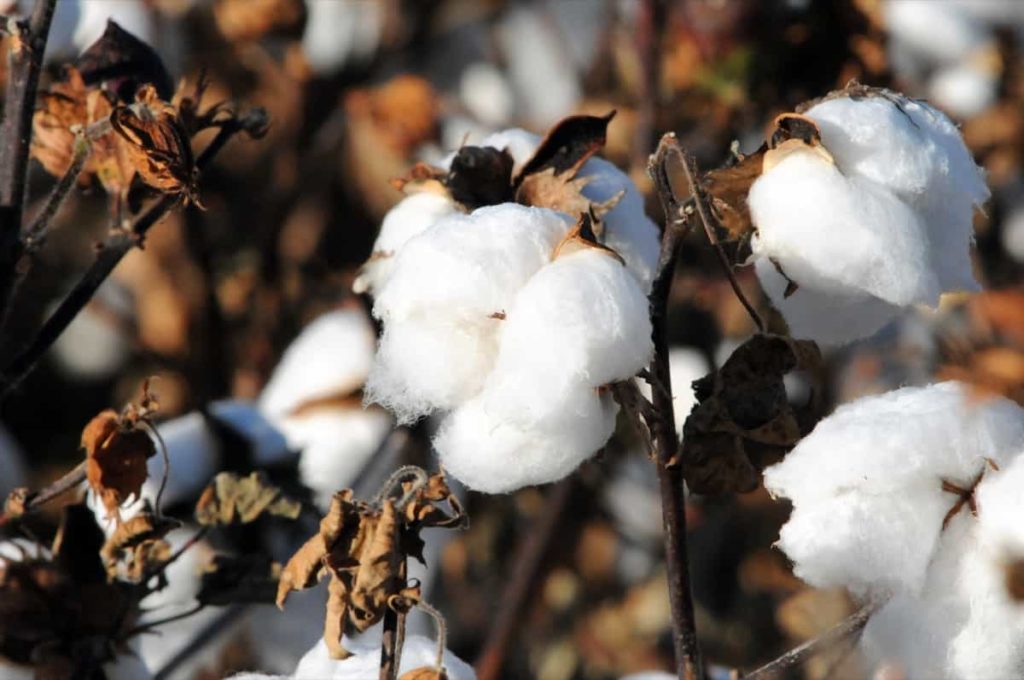
The Cotton crop needs a constant supply of essential nutrients for healthy growth and better production. It is difficult to determine the appropriate fertilizer for Cotton as many variations can affect growth and production. Anything that causes plant stress will affect the nutrients. Some of the factors involved are soil structure, drainage, field preparation, weather, type, planting time, plant population, emergence and stand, previous crop, and carrying fertility and/or chemicals.
Existing soil testing is still the best tool for estimating, and a well-balanced fertility program is essential for good yields. For efficient management of fertilizers and their profitable use, it is important to know about them first.
- Soil Nutrition Status
- Crop Type
- Crop History and
- Use of Organic Residues
The efficiency of the nutrient factor can be enhanced.
- The right choice of fertilizer
- The right method and
- The right time of application
Benefits of fertilizer in Cotton production
The use of fertilizers in conventional agricultural production is unscientific and unbalanced. The important thing is that the shortage of fertilizers in past is less experienced now. Therefore, it is important to use fertilizers in a balanced way. When planting Cotton, apply local fertilizer and FYM. Use a mixture of nitrogen, phosphorus, potash when sowing. For the first time, use a handful of nitrogen fertilizers and magnesium sulfate to control red leaves. Use micronutrients with a mixture of nitrogen, phosphorus, potash in the third dose of fertilizer to prevent the falling of leaves and flowers.
In case you miss this: Make Lakhs with Cotton Farming, Find Out Simple Facts and Techniques
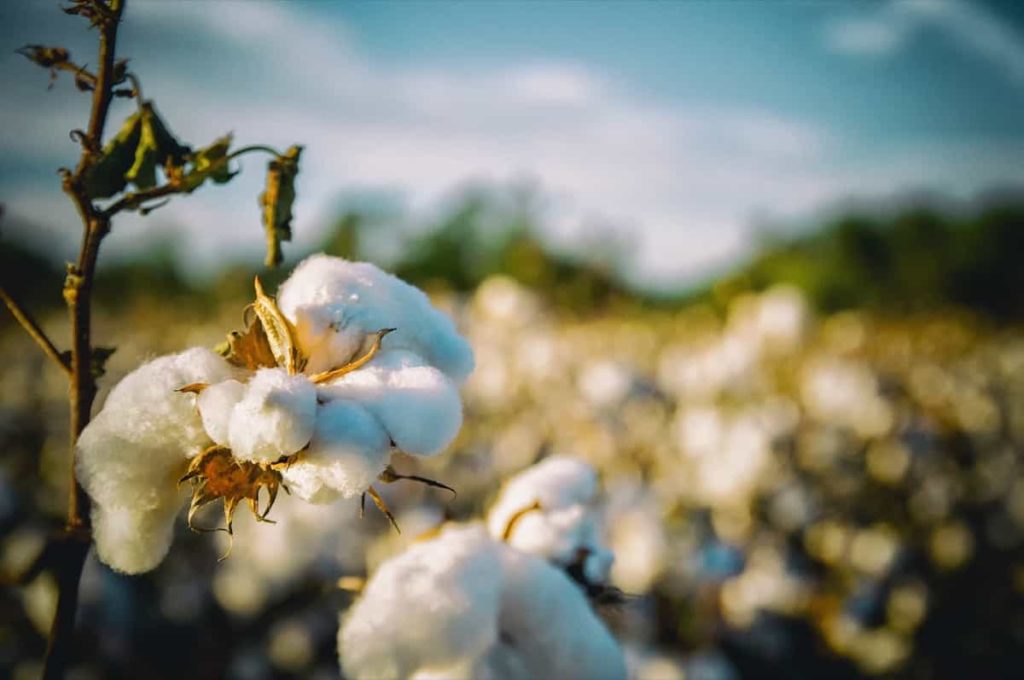
Best fertilizer for Cotton
Organic fertilizers
Apply a balanced organic fertilizer to the soil before planting Cotton. When flowering begins in mid-summer, top dress with more fertilizer or applies the plant in liquid food. Organic fertilizers significantly increased the productivity of Cotton and the use of nitrogen.
FYM – Approximately 10 to 12 tons of strong farmyard manure with 4-5 liters of biofertilizer should be applied 15 to 20 days before sowing. Farmyard manure with bio-fertilizers will help increase yields by enhancing the efficiency of Cotton plants, crop growth, and nutrient utilization in every possible way.
An integrated approach should be used to achieve maximum Cotton production to be more economical and environmentally friendly. Thus, improving nutrient utilization efficiency through balanced nutrient management, including the use of macro and micronutrients, organic and inorganic sources, and soil and foliar applications, and adopting integrated nutrient management according to crop genotypes, local farming systems, and water management should be considered in the future management of nutrients.
Compost and farmyard manure is important for improving and maintaining soil fertility and providing a basic supply of nutrients to the crop. However, during the formation of flowers and buds, Cotton is particularly demanding, which is not fully met by the available amount of fertilizer and farmyard manure (FYM).
In case you miss this: Cotton Seed Germination Period, Temperature, Process
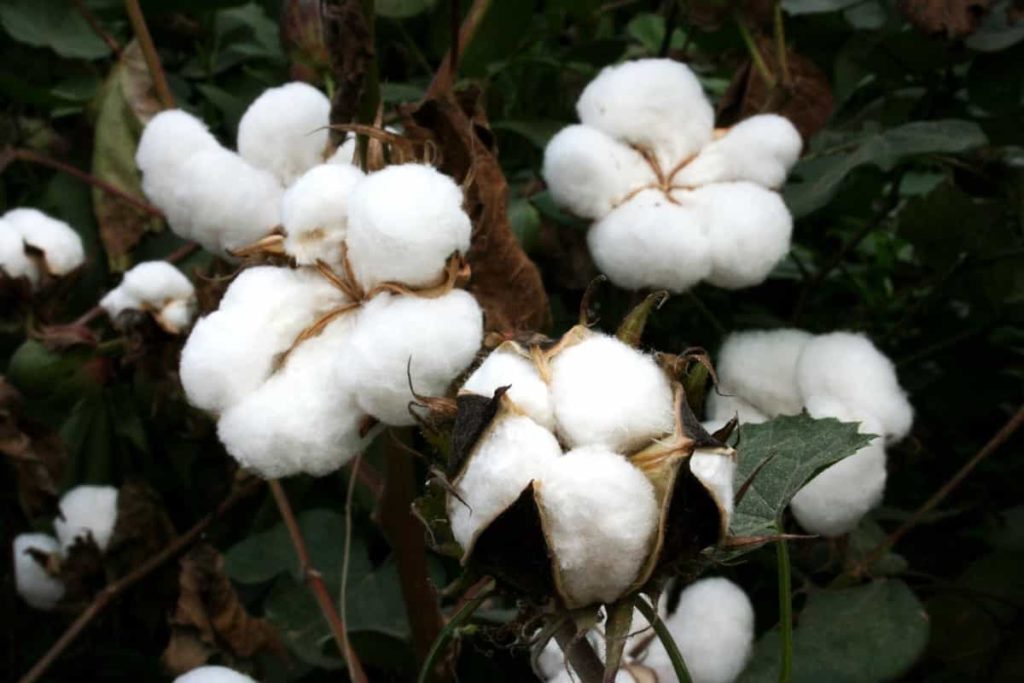
It is therefore recommended that additional organic fertilizers be provided during this stage, such as de-oiled cakes (caster cakes, neem cake), poultry manure, goat and sheep manure, bone meal, food processing waste, press mud compost, etc. However, manures from intensive rearing (e.g., chicken rearing) are not permitted according to most organic standards.
NPK fertilizers
A Cotton fiber consists mainly of cellulose, which consists of hydrogen, oxygen, and carbon. These elements form the backbone of every molecule and part of the plant. After ginning, the mineral nutrients of nitrogen (N), phosphorus (P), potassium (K), and micronutrients are removed along with the seeds and trash and make up only 1% of the bale’s weight.
NPK fertilizers are applied during sowing to balance soil nutrients: essential, secondary, and micronutrients. The correct formulation and balance will be applied according to the soil content keeping in view the crop requirements and expected yield.
Nitrogen
- Nitrogen affects plant growth and seed production.
- Symptoms of deficiency – Yellow, yellowish-green, and appearance of small leaves.
- Nitrogen fertilizers meet the nutritional requirements of maximum need, this is the key to crop growth. Applying sulfur, microelements, and nitrogen together improves their absorption efficiency through coordination (S, Zn, Mg).
Phosphorus
- Participates in energy conversion, photosynthesis, and respiration.
- Promotes the rapid growth of Cotton and is mostly concentrated in seeds.
- Symptoms of deficiency – Dark green color of leaves, sometimes purple spots appear. The size of the plant decreases.
Potassium
- Improves capsule growth and maturation.
- Symptoms of deficiency – Appearance of yellow color spots. When deficient, the edges of the leaves become necrotic.
In case you miss this: Organic Cotton Production; Cultivation Practices
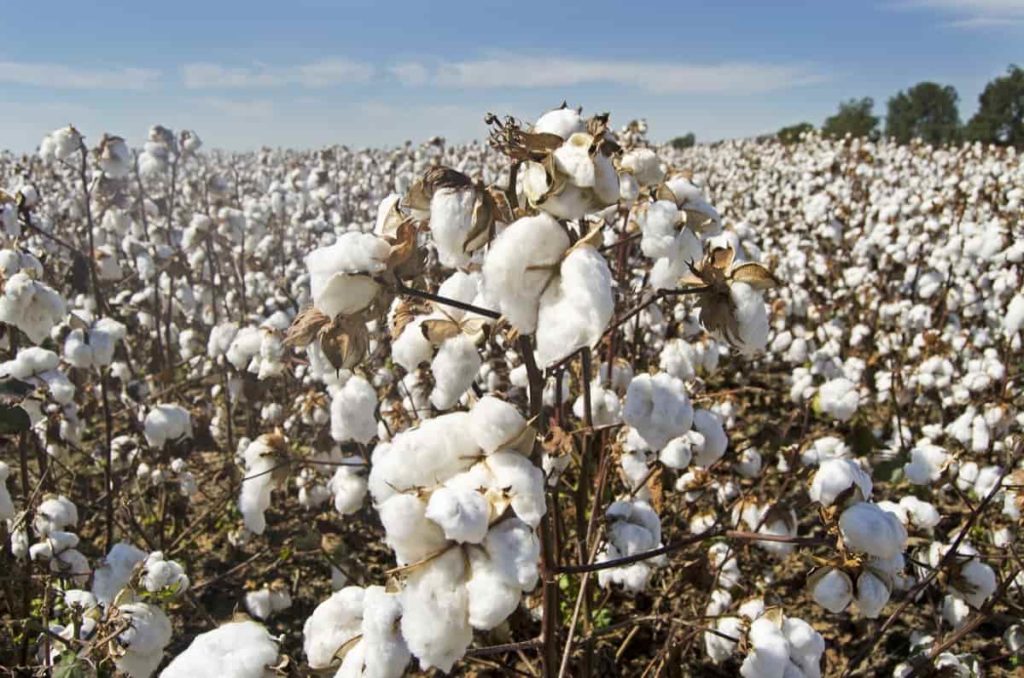
Use of Growth Regulators / Micro Nutrients
NAA (Planofix) @ 4.5 ml / 18 liters of water applied at flowering time will prevent flowers and buds from falling off. A total of 800-1000 liters of spray solution is required per hectare area. Similarly, the application of 2% urea and 0.5% MgSO4 on the crop between 90 to 110 days after sowing will prevent the Cotton leaves from turning red.
Integrated Nutrient Management
It is recommended that the required nutrients be provided in an integrated supply mode in which nutrients are supplied from both organic and inorganic sources. This has been proven by many field experiments that ½ N from organic sources and the rest ½ N + full P and K as fertilizers will form the ideal combination for integrated nutrient delivery methods.
Recently, zinc and sulfur are supplied as enriched compost in which the fertilizer is prepared with organic sources zinc and sulfur. Residues of green manure crops grown and recycled before Cotton can be an ideal source of organic nutrients in irrigation conditions.
Biofertilizers
Bio-fertilizers have beneficial micro-organisms that increase the availability of nutrients. In general, the organically managed soil that receives compost and other organic fertilizers already contains most of these beneficial microbes. The use of bio-fertilizers can further increase their number and activity. When converting farms from chemical to organic farming, the use of bio-fertilizers can help revitalize the soil.
To find out if a particular bio-fertilizer has a real beneficial effect on the field, farmers can conduct a simple plot trial in which one part of the field can be treated while the rest is without treatment. Biofertilizers improve soil N fertility more than cattle manure. Continued use of chemical fertilizers has resulted in soil degradation, depletion of many nutrients, and increased air and water pollution.
Proper use of various nutrient sources such as chemical, organic, and bio-fertilizers is essential for maintaining soil health and high crop productivity. In this context, biofertilizers are important as part of an integrated nutrient management system. Organic fertilizers are cheap and environmentally friendly and can complement other sources of nutrients up to 25-30%.
Liquid fertilizers
In the later stages of crop development, some of the essential nutrients can be provided by liquid fertilizers such as cow urine, biogas slurry, or fermented manures. They are sprayed on the soil, applied with irrigation water, or diluted and sprayed as a foliar fertilizer. The advantage of liquid manure is that the nutrients become available almost immediately. In this way, they can be used to improve the supply of nutrients. Liquid fertilizers used in Cotton crops are cow urine, slurry (from cow dung or biogas), vermi-wash, Amruth pani, Jeev amruth.
In case you miss this: Cotton Cultivation Project Report, Farming Cost, Profit
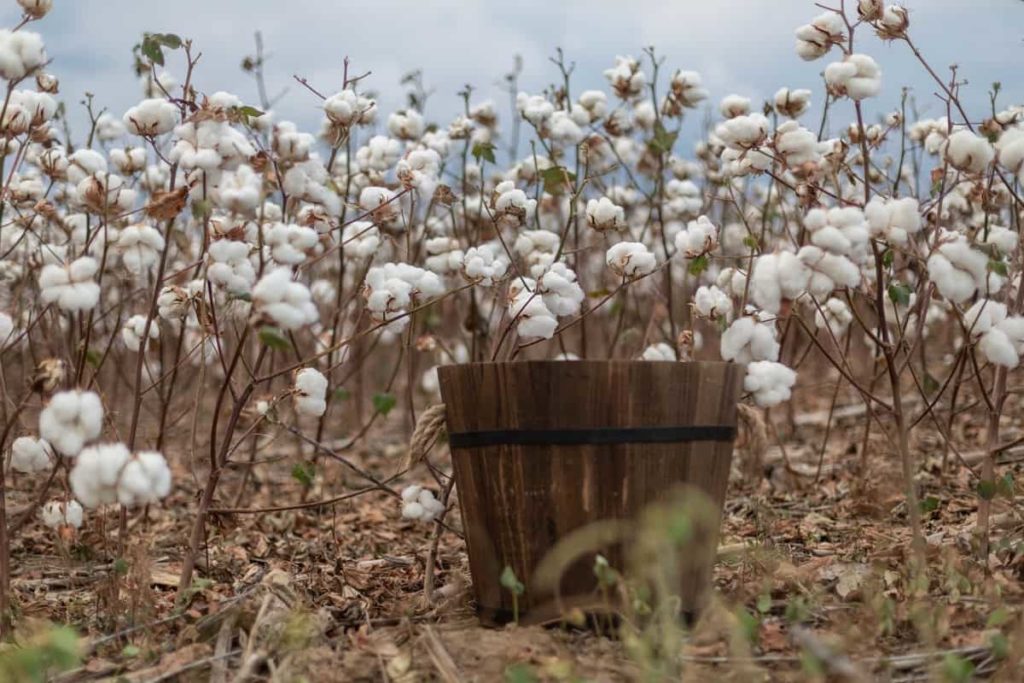
Other important nutrients for Cotton plant growth
Secondary nutrients are important for plant growth that includes calcium (Ca), magnesium (Mg), and sulfur (S). These three nutrients, which can be identified as “synthesizers”, play a key role in the essential growth and health of plants. Cotton plants take in almost as much magnesium and sulfur as phosphorus, an important nutrient.
- Calcium is needed even more. The functions of calcium include strengthening cell walls to prevent them from collapsing, increasing cell division and plant growth, balancing protein synthesis, carbohydrate movement, and cell acidity.
- Magnesium is essential for the production of green color in chlorophyll. Chlorophyll is essential for photosynthesis, converting sunlight into plant food (carbohydrate synthesis).
- Sulfur is essential for the production of three amino acids, which are a major barrier to protein synthesis.
Fertilizer schedule – (kg/ha)
1. Basal (before sowing)
- SSP – 375 kg
- Zinc Sulphate – 50 kg
- Farmyard manure – 10-12 tons
- Zinc Sulphate can be applied separately
2. 1st Top Dressing (10 to 15 days after sowing)
Double OX Calcium Nitrate Field Grade -25 to 35 kg
3. 2nd Top Dressing (30 Days after sowing)
- Urea -90 kg
- MOP -35 kg
4. 3rd Top Dressing (60 days after sowing)
- Urea -90 kg
- MOP -35 kg
5. 4th Top Dressing (90 days after sowing)
- Urea -90 kg
- MOP -35 kg
In case you miss this: Cotton Farming Guide; Planting; Care; Yield; Harvesting
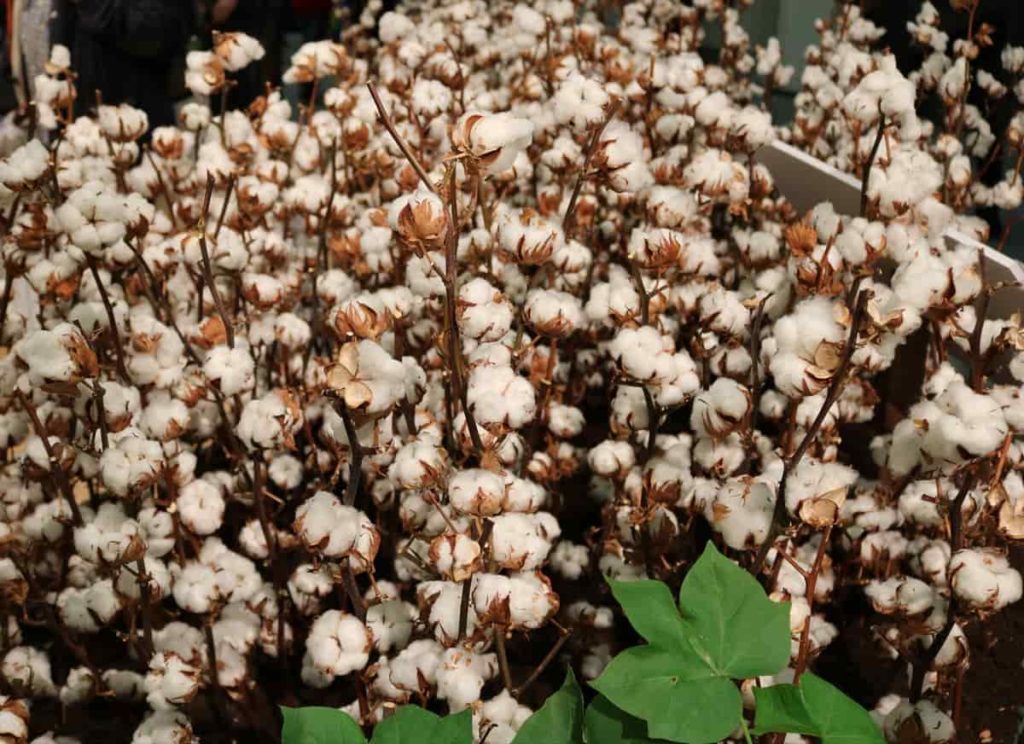
Phosphorus in the form of SSP as basal application as furrow placement will not lose the placement and will improve the soil condition. The sulfur content in SSP will be beneficial in improving the oil content of cotton seeds. Nitrogen efficiency increases when essential phosphorus is available. Potassium use increases fiber maturity, micronuclear value, and fiber uniformity. The use of balanced nutrition increases the number of nutrients.
When and how to fertilize Cotton plants
As with every other crop, there can be no universal fertilization scheme, because each field is different and has different needs. Soil analysis once a year is essential to diagnose nutrient deficiencies and take corrective action under the guidance of a licensed agronomist. However, we will list the most commonly used methods of fertilization of Cotton plants.
As the first rule of thumb, the Cotton plant uses twice as much nitrogen (N) as phosphorus (P) and potassium (K). Consequently, N-P-K 20-10-10 fertilizer is more suitable if soil analysis is impossible. A common fertilizer application by many Cotton growers is adding 440 lbs. (200 kg) of N-P-K 20-10-10 per hectare during sowing and 440 lbs. (200 kg) N-P-K 20-10-10 per hectare during flowering (early summer).
Another general fertilization scheme is adding 550 lbs. (250 kg) of ammonium nitrate, 400 lbs. (181 kg) of N-P-K value 0-46-0, and 400 lbs. (181 kg) of N-P-K 0-0-50 per hectare land throughout the year. These quantities are usually spread in 8 equal applications, after the first sowing and about 6 weeks after the last flowering. However, these are just common patterns that should not be followed without your research and soil analysis.
In other cases, growers prefer to use KNO3 leaves once a week after the first flowers appear. Foliar applications can deliver fertilizers and pesticides at the same time, thus reducing labor costs.
- Types of Pesticides Used in Agriculture: A Beginner’s Guide
- Economical Aquaculture: A Guide to Low-Budget Fish Farming
- 15 Common Planting Errors That Can Doom Your Fruit Trees
- How to Make Houseplants Bushy: Effective Tips and Ideas
- Innovative Strategies for Boosting Coconut Pollination and Yield
- Pollination Strategies for Maximum Pumpkin Yield
- The Complete Guide to Chicken Fattening: Strategies for Maximum Growth
- Natural Solutions for Tulip Problems: 100% Effective Remedies for Leaf and Bulb-Related Issues
- Revolutionizing Citrus Preservation: Towards a Healthier, Greener Future
- Natural Solutions for Peony Leaf and Flower Problems: 100% Effective Remedies
- Maximizing Profits with Avocado Contract Farming in India: A Comprehensive Guide
- Natural Solutions for Hydrangea Problems: 100% Effective Remedies for Leaf and Flowers
- The Ultimate Guide to Choosing the Perfect Foliage Friend: Bringing Life Indoors
- From Sunlight to Sustainability: 15 Ways to Use Solar Technology in Agriculture
- The Ultimate Guide to Dong Tao Chicken: Exploring from History to Raising
- The Eco-Friendly Makeover: How to Convert Your Unused Swimming Pool into a Fish Pond
- Mastering the Art of Delaware Chicken Farming: Essentials for Healthy Backyard Flocks
- 20 Best Homemade Fertilizers for Money Plant: DIY Recipes and Application Methods
- How to Craft a Comprehensive Free-Range Chicken Farming Business Plan
- Brighten Your Flock: Raising Easter Egger Chickens for Beauty and Bounty
- How to Optimize Your Poultry Egg Farm Business Plan with These Strategies
- Subsidy for Spirulina Cultivation: How Indian Government Schemes Encouraging Spirulina Farmers
- Ultimate Guide to Raising Dominique Chickens: Breeding, Feeding, Egg-Production, and Care
- Mastering the Art of Raising Jersey Giant Chickens: Care, Feeding, and More
- Ultimate Guide to Raising Legbar Chickens: Breeding, Farming Practices, Diet, Egg-Production
- How to Raise Welsummer Chickens: A Comprehensive Guide for Beginners
- How to Protect Indoor Plants in Winter: A Comprehensive Guide
- Ultimate Guide to Grow Bag Gardening: Tips, Tricks, and Planting Ideas for Urban Gardeners
- Guide to Lotus Cultivation: How to Propagate, Plant, Grow, Care, Cost, and Profit
- Agriculture Drone Subsidy Scheme: Government Kisan Subsidy, License, and How to Apply Online
- Ultimate Guide to Raising Araucana Chickens: Breed Profile, Farming Economics, Diet, and Care
- Bringing Hydroponics to Classroom: Importance, Benefits of Learning for School Students
- Ultimate Guide to Raising Polish Chickens: Breed Profile, Farming Economics, Diet, and Care
- Ultimate Guide to Raising Australorp Chickens: Profile, Farming Economics, Egg Production, Diet, and Care
- Silkie Chicken Farming: Raising Practices, Varieties, Egg Production, Diet, and Care
- Sussex Chicken Farming: Raising Practices, Varieties, Egg Production, Diet and Care
I need the exact names for a fertilizers used in cotton and schedule of application.